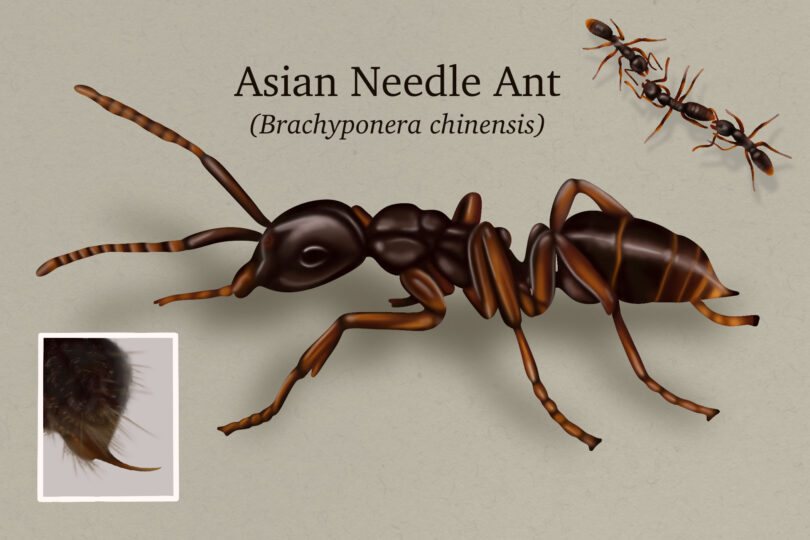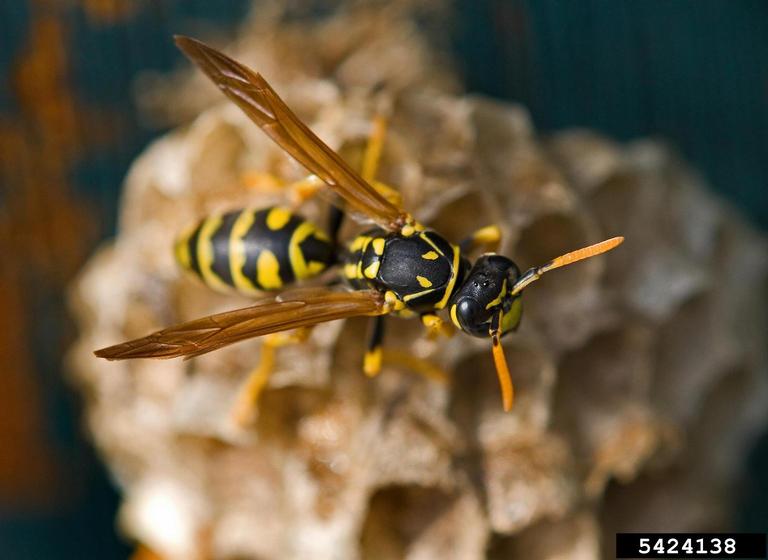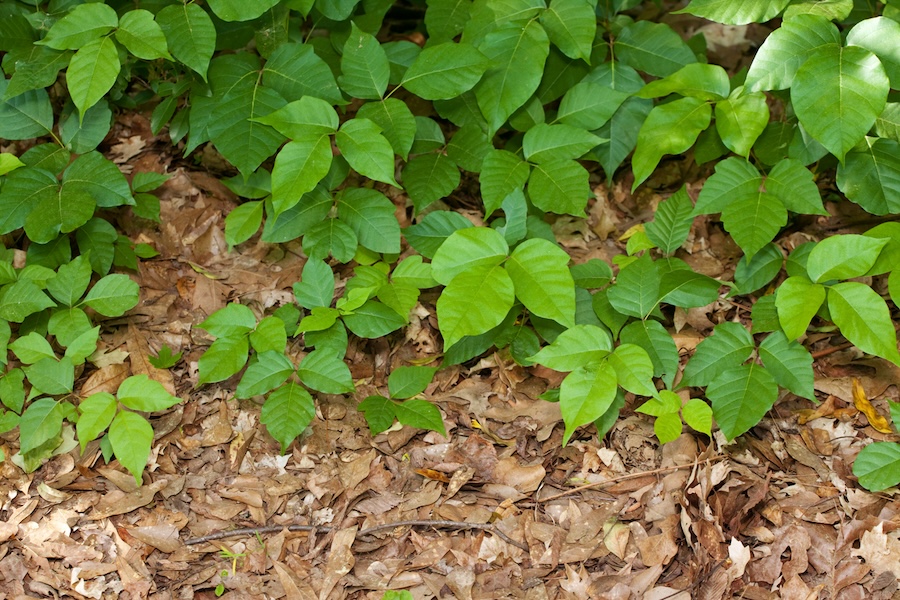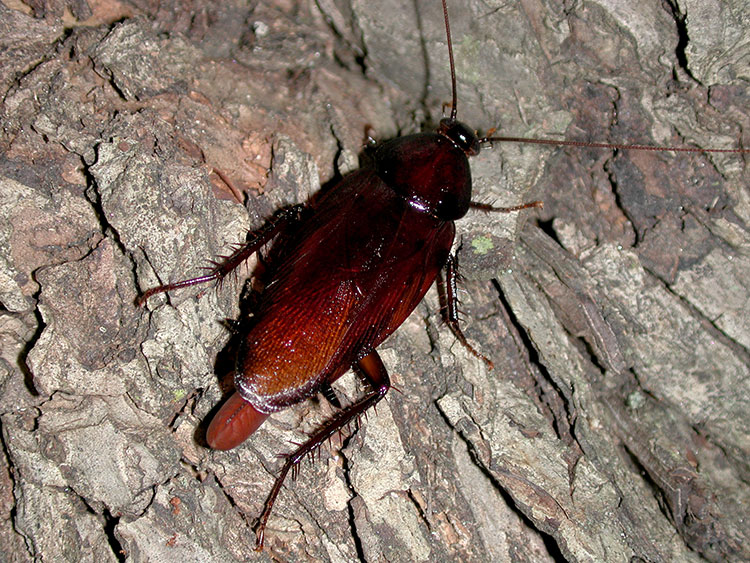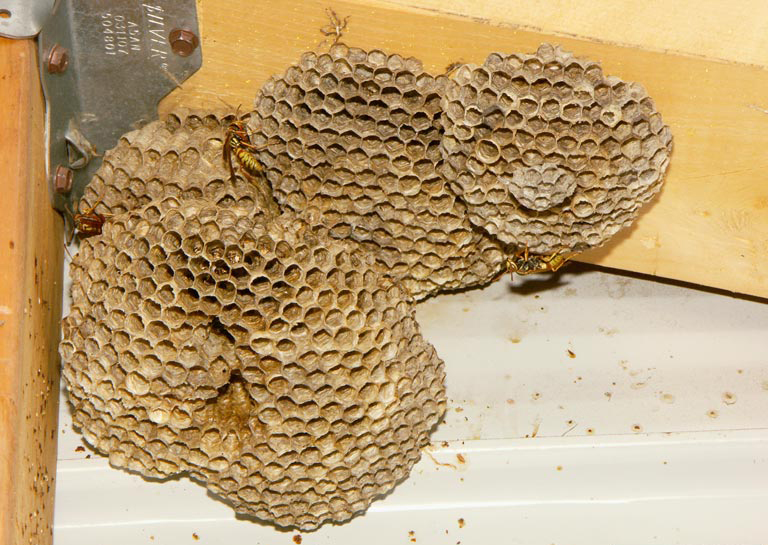
Late summer is a good time to observe many types of insects buzzing around homes and gardens. As we approach fall, the local populations of many types of insects begin to reach their peak.
This time of year, University of Georgia Cooperative Extension agents get more calls about yellow jackets and hornets, as their nests can grow to a foot or more in diameter with as many as 500 to 1,000 workers.
Folks often encounter hornets, yellow jackets, moths, and various beetles flying around the doors and windows of their home — especially at night. Many people want to know what can they spray to kill these bugs and keep them from being a nuisance.
But spraying your home for these flying insects is probably the least effective way to deal with the problem. If you’re lucky, you might kill a few on any given night with an aerosol spray, but hundreds more of their closest cousins will fly back the next night.
The nests of yellow jackets and hornets are probably a safe distance from your home. As a general rule, yellow jackets tend to nest in the ground, usually occupying old, decayed stump holes. These underground nests are often encountered when someone mows their lawn or passes a weed trimmer too close to their entrance hole. Bald-faced hornets construct aerial nests that hang from tree branches. European hornets typically build nests in hollow trees, barns, sheds, attics or the wall voids of houses.
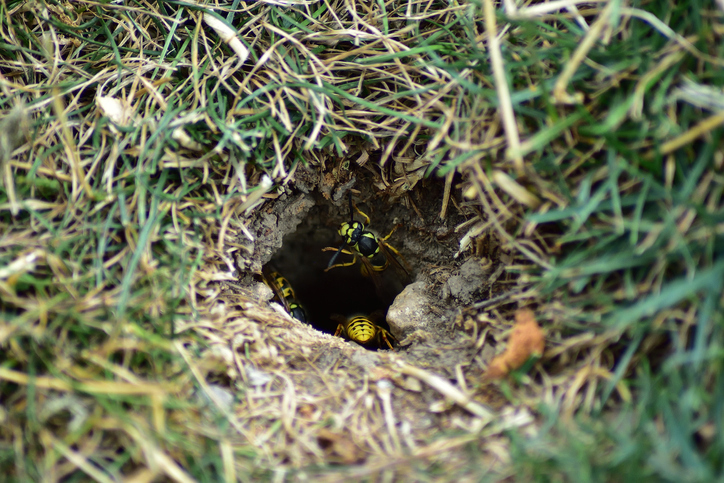
Note that all wasp, hornet and yellow jacket colonies will die off in the winter and will not reuse the same nest the following year. In most situations, the best option is to leave them alone if you can simply avoid going near the nest for a few more months. If you don’t know where the nest is located, don’t go looking for trouble.
Many insects are attracted to bright exterior lighting or light shining through windows in homes and may beat into the glass with quite a lot of force. This causes some people to panic, thinking they are trying to break the glass to attack them — which is not true. Hornets and wasps tend to hover incessantly around porches and doorways that have nearby flood lights.
Of course, the simplest solution is to keep exterior lights turned off. When you do use exterior lights, don’t leave them on for extended periods of time. Soft, yellow lights are the least attractive to most insects. Even LED light that is filtered to be yellow or amber in color attracts fewer of the flying insects. Some are sold as “bug lights” intended to make porch lights less attractive to nuisance insects like May and June beetles.
A recent study from the University of California, Los Angeles (UCLA) and the Smithsonian Institution found that blue and ultraviolet lights create other problems for insects and humans beyond their nuisance aspect. Artificial lights can alter normal insect behaviors, interfering with their ability to navigate at night, and has been linked to the decline of insect populations and species diversity on a larger scale.
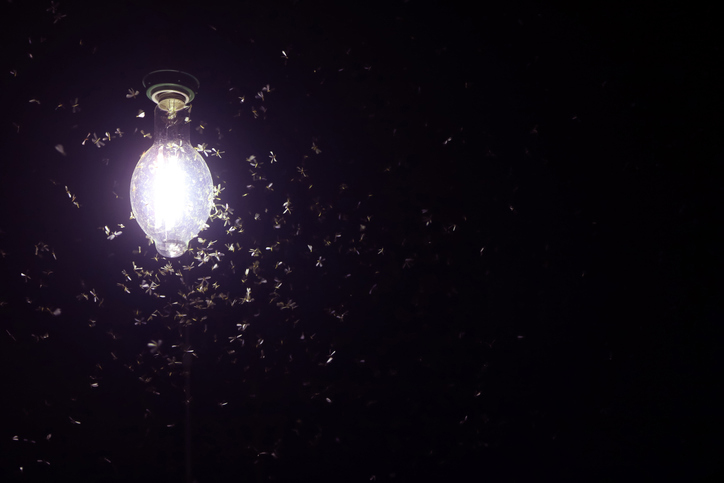
Artificial lights can also attract biting insects that can spread deadly diseases. Ultimately, the type of lights that people use can keep people safer as well as help conserve insect biodiversity.
Changing your porch light or keeping exterior lights turned off is something you should encourage your friends and neighbors to do and ultimately has the least impact on nature. So, instead of buying another can of wasp and hornet spray, consider changing your light bulb and maybe you’ll see the light — most of these insects are beneficial if we can learn how to live with them.
For more information about pests and other nuisance animals, or to find your local UGA Extension agent, visit extension.uga.edu.


